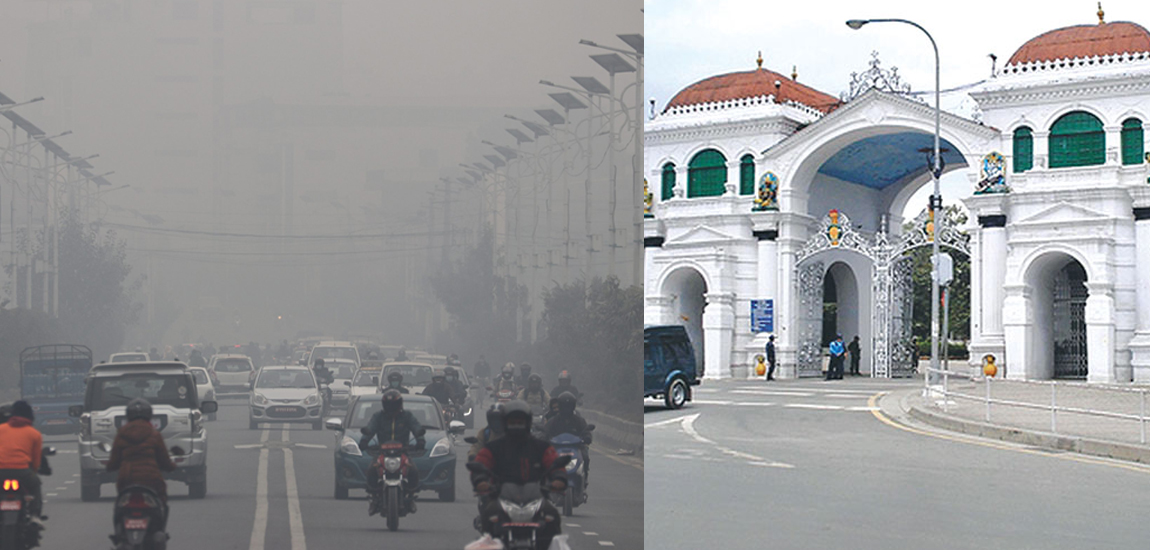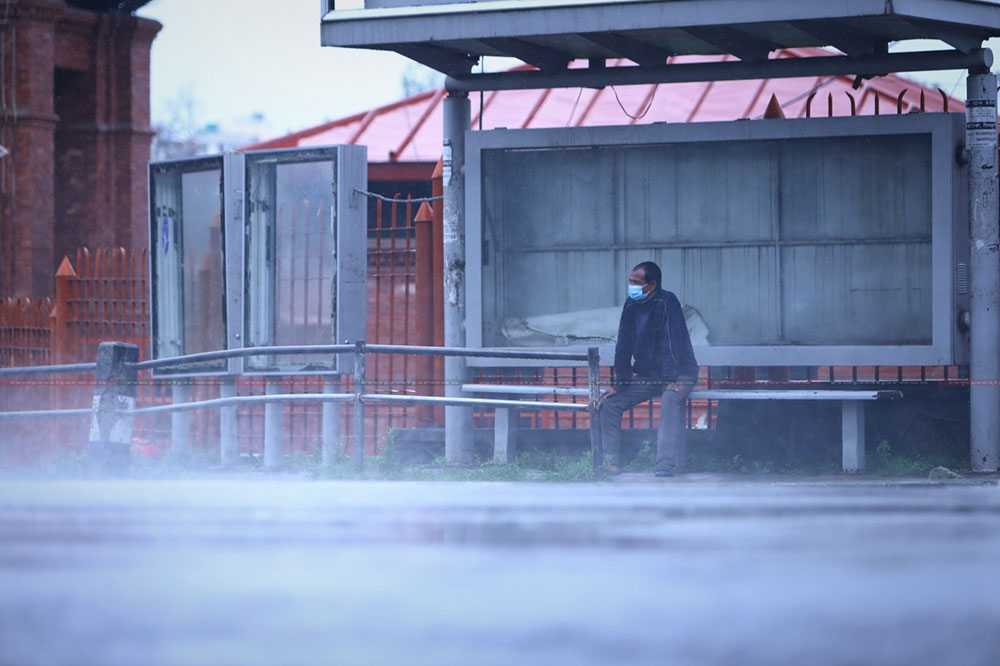How come ‘SinghDurbar’ doesn’t suffocate with this pollution ?

KATHMANDU: On Thursday afternoon, almost simultaneously, Nepali online media platforms were flooded with news declaring Kathmandu, Nepal’s federal capital, as the most polluted city worldwide. As a self-proclaimed conscientious media consumer and producer, this writer meticulously scrutinized the entire news piece and primarily observed two aspects. Firstly, the implied message conveyed by the news title itself, and secondly, the synchronous coverage across nearly all online media platforms. The reason behind this synchronicity was the dissemination of particular news by the government-owned news agency.
If we view news media platforms as reflections of society, then it’s reasonable for our media to disseminate news that plays a significant role in raising awareness about the conditions of our city and the health of its inhabitants. To be honest, after reading that news, I decided to purchase a mask on my way home from the office, which I otherwise wouldn’t have bothered to spend Rs 20 on. After all, I could have enjoyed a nice cup of tea with that Rs 20, couldn’t I? But let’s not dwell on my trivial belief system. I do believe there’s a point worth discussing in the public sphere.
Firstly, why do you think our media platforms waited for this news to be delivered by the agency? The so-called mainstream media, which claims to be the fourth pillar of democracy and the torchbearer of change, didn’t find this issue newsworthy enough? An issue directly affecting the health of millions of Nepalis isn’t deemed newsworthy for front-page headlines in daily broadsheets or as a main story in online media? As creators and journalists, we need to question what we’re focusing on. Are we revolving solely around political gossip? Now that Suhang has won the sub-election in Illam and the Home Minister has once again pleaded himself not guilty in the “Sahakari Prakaran” case, at least some of us should strive to highlight this pollution-related issue.
As mentioned earlier, Kathmandu recently claimed the title of the most polluted city in the world. But how can a city with a population of just 1.5 million be the most polluted globally? Reports attribute this dubious honor to vehicular emissions, soot particles from brick kilns, and open burning of trash. To be more precise, the numerous wildfire incidents occurring across the country in recent times have significantly contributed to air pollution. I will discuss mitigation measures for air pollution and also question why our authorities are making such minimal efforts to address these calamities. But before that, let me share a finding from research conducted by the University of Chicago last year. The research suggests that the average lifespan of Nepalis is declining by 4.5 years due to alarming levels of air pollution. This figure climbs to 7 years for Nepali citizens residing in the Terai region, where they face transboundary air pollution as well. If you are unaware, approximately 53% of Nepal’s total population resides in the Terai region.
Vehicular emissions are undeniably a major contributor to this hazardous situation, but the question remains: can’t we do anything to mitigate this? Of course, we can! Just as we use breathalyzers to check drivers, why can’t we employ similar technology to monitor vehicle exhaust emissions? Additionally, what about prioritizing electric vehicles (EVs)? Furthermore, if soot particles from brick kilns and open burning of trash are also significant contributors to pollution, where are the policies and what are our regulatory bodies doing about them? If simple awareness programs can reduce road accidents by 90%, then perhaps similar initiatives could yield comparable or at least partial results in combating pollution. Who knows?
Now, let’s discuss wildfires. At the time of writing this article, five people have lost their lives and 35 have been injured due to wildfires and fires in Nepal. Moreover, more than 12 crores of economic damage has been incurred, with over 263 structures and 245 animals destroyed. Statistics reveal a staggering 394 incidents of fires and wildfires across the country in the last week alone. In the past month, nearly 1,500 wildfires and fire incidents have been reported in Nepal. It’s likely that even as you read this, many of our forests are still ablaze.
According to Dijan Bhattrai, spokesperson of the Disaster Management Authority, the prolonged drought in Nepal last year led to many trees drying up and falling, while dried leaves and twigs remained on the ground, acting as fuel for the wildfires. Alas, there seems little we can do in the current situation; only rainwater might provide some relief. Surely, rain will come soon—after all, Nepal is blessed by Pashupatinath, right? But wait a minute! Prolonged drought last year? And we can’t do anything now? Really? Is this a completely new phenomenon? If not, what preventive measures were taken by our authorities before wildfire season arrived? They could have raised awareness among the populace and removed potential fuel sources from community forests by coordinating with local governments. While it might not be feasible to monitor every forest area, prioritizing those close to human settlements could have made a difference. With such measures, some culprits setting fires could have been apprehended, and some wildfires might have been contained. Who knows?
I firmly believe that the wildfire and pollution incidents are not solely the outcome of prolonged drought, climate change, and transboundary pollutants; rather, they are evidence of the indolence of our government. These incidents underscore the incompetence of our policymakers and the failure of our nation. With eyes filled with rashes and discomfort, and the potential risk of heart attacks, kidney diseases, osteoporosis, and dementia looming over us, isn’t it high time we asked the question: How come ‘SinghDurbar’ doesn’t suffocate with this pollution ?















